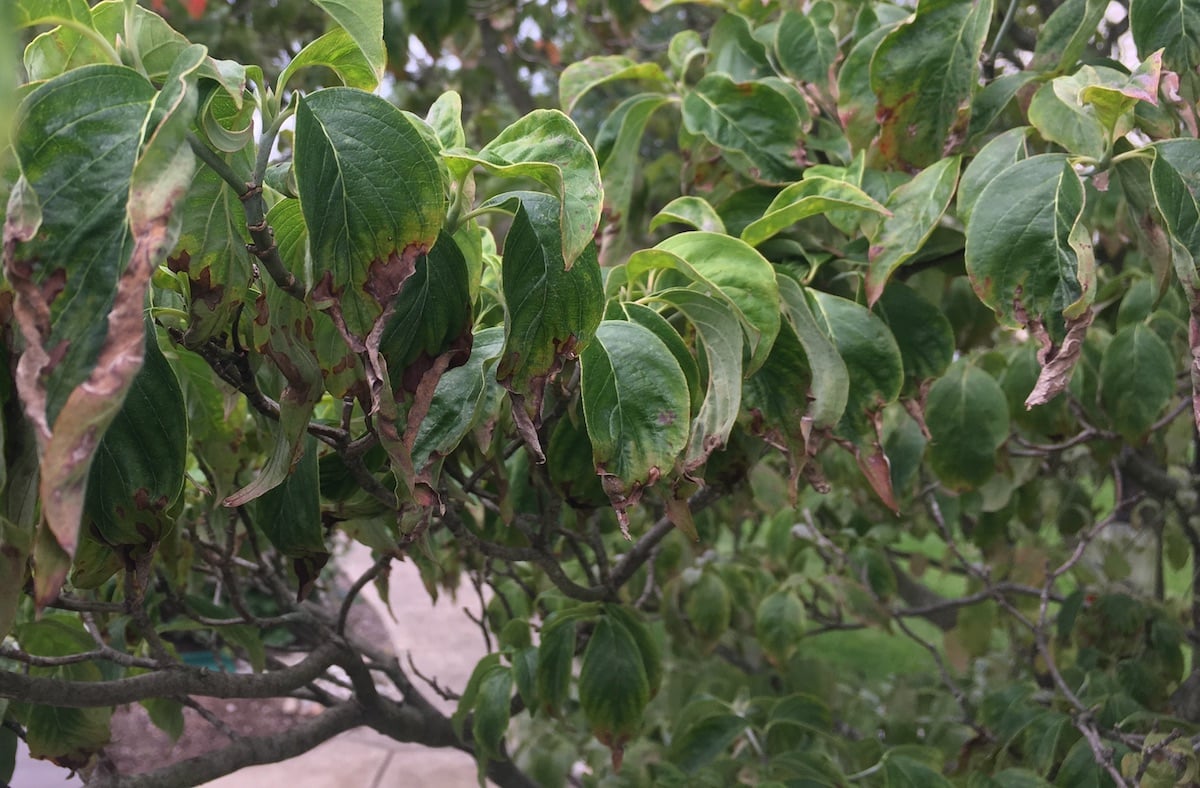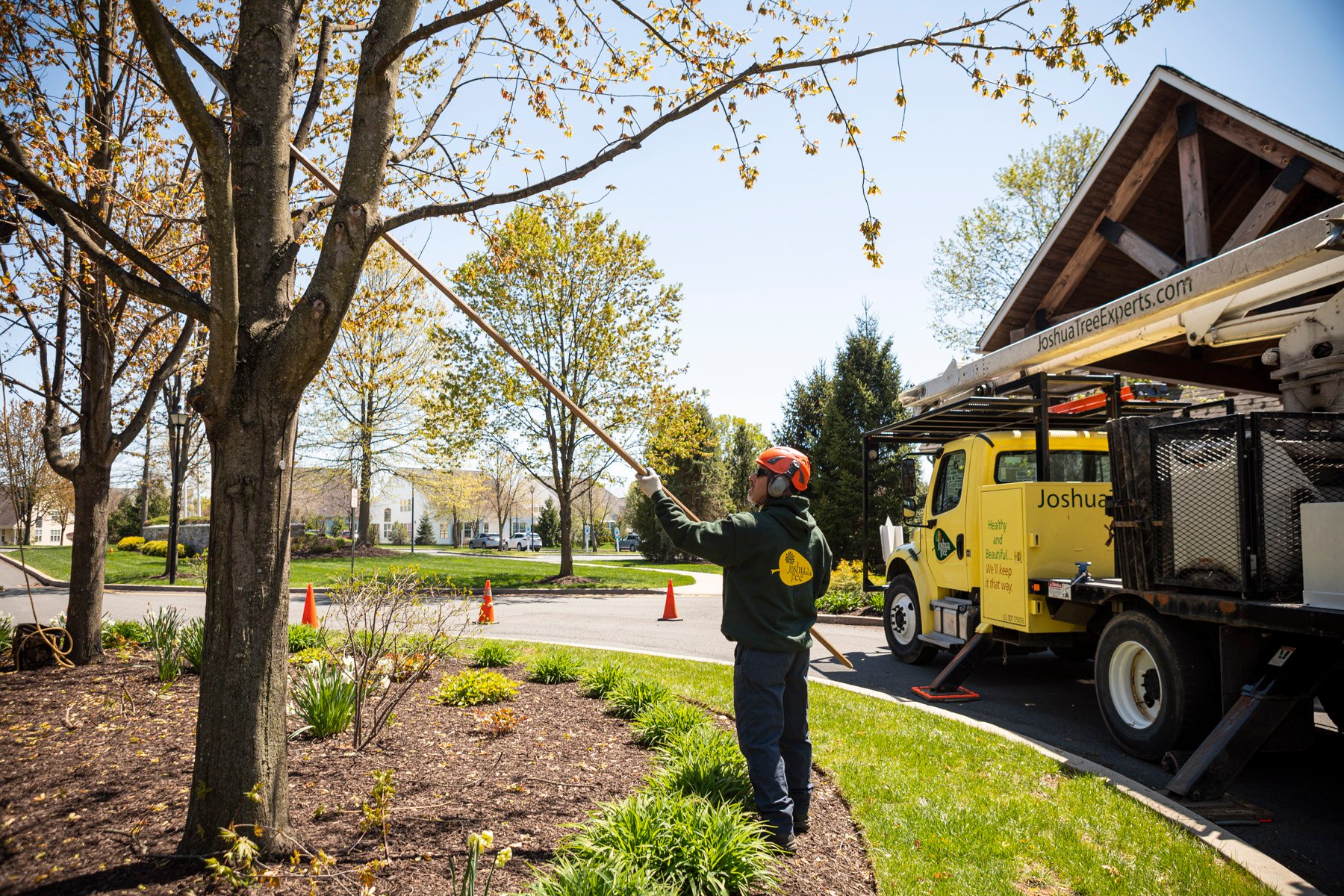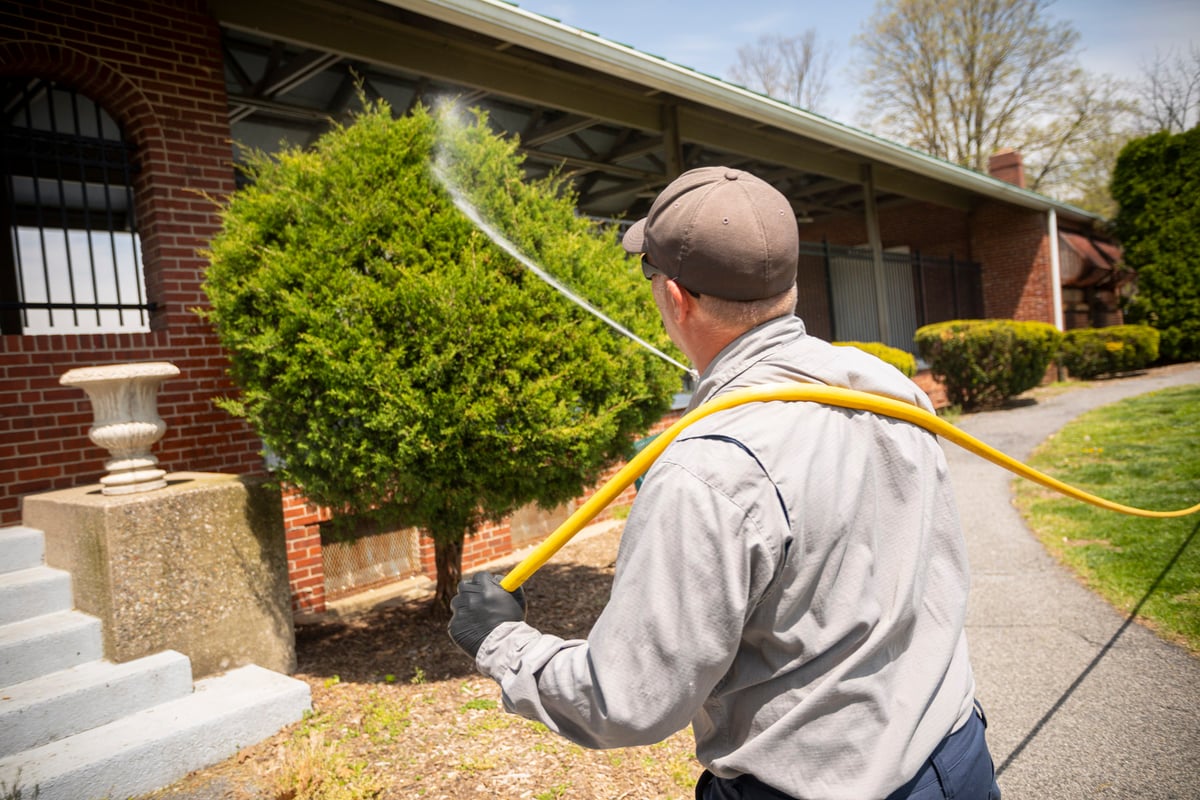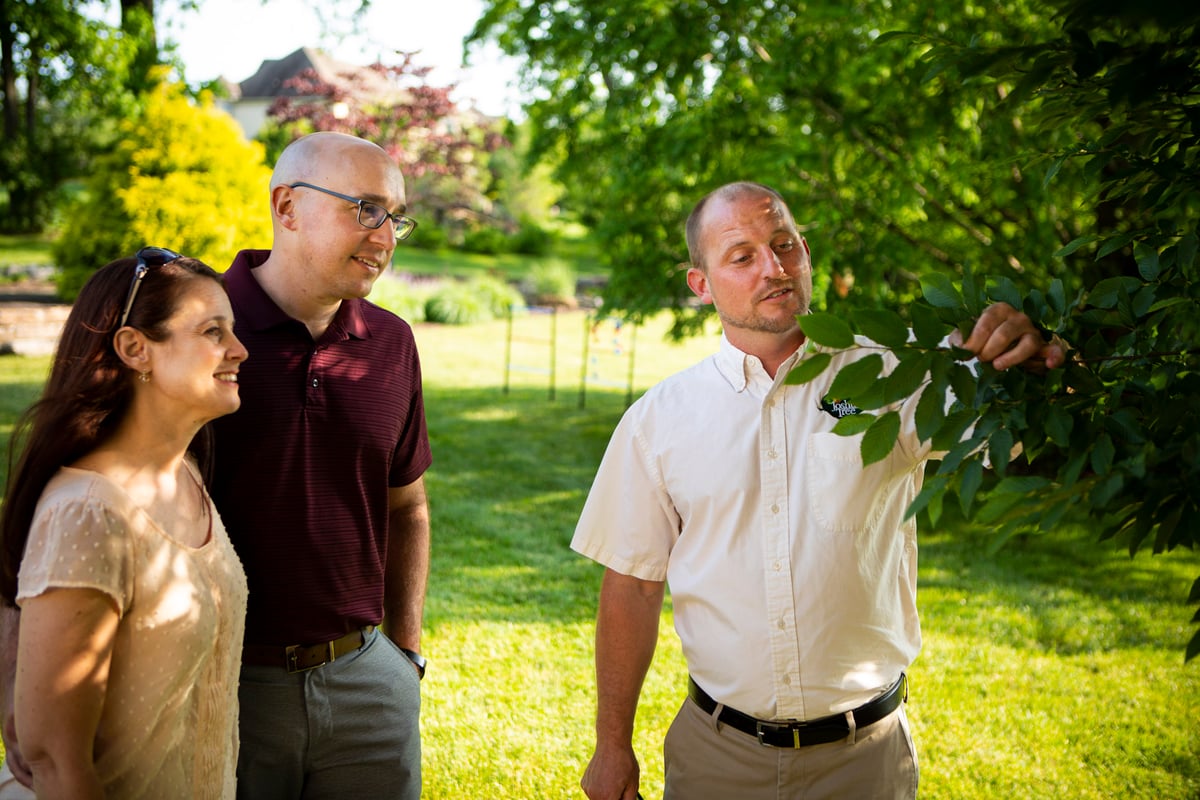When it comes to getting the most out of your property, you want to know that your trees are going to continue to thrive. Trees are important for many reasons including aesthetic appeal, shade, sentimental value, and so much more.
Unfortunately, there are a number of different tree diseases that can impact the health of our trees.
One of the common tree diseases is Anthracnose, a fungal disease that often occurs in deciduous trees like Dogwoods, Ashes, Sycamores, and Maples. In this article, we’ll talk about what Anthracnose disease can entail both in terms of symptoms and Anthracnose treatment.
We know that anytime you find something potentially wrong with a tree, it can be alarming. And we also don’t want you to feel as though you have to be a tree expert to figure out what’s going on. But we will provide some helpful information that should help set you up for success.
What is Anthracnose Disease?
Anthracnose disease is actually a group of related fungal leaf and stem diseases that commonly impact deciduous shade trees. This disease tends to be more prevalent following a rainy spring or summer when the hot and wet conditions allow the fungi to thrive. In fact, it can spread rather quickly during hot and rainy seasons with conditions that are just right.
Watering a tree infected with Anthracnose disease will actually make the condition worse by causing it to spread.

Once the conditions are hot and dry, Anthracnose disease will usually stop spreading (though this can depend upon the species of the tree).
The disease tends to start on leaves and twigs, which is why it’s also sometimes called leaf or twig blight.
What are the Anthracnose Symptoms?
The exact Anthracnose symptoms that you encounter can depend upon the host that it is attacking. But a good majority of the time, finding brown spots on tree leaves is a sign that your tree might have Anthracnose disease.
Of course, to be fair, brown spots on tree leaves can be a sign of other tree problems as well, which is why it’s always important to consult with a tree care expert.
Other Anthracnose symptoms include browning of the leaf veins, twig death, and dying of buds (which in the early season may be misidentified as frost damage). It can also cause defoliation of the tree.
Oftentimes the lower and inner leaves and branches of the tree’s canopy show the most severe symptoms of this disease.
If a tree has a particularly bad case of Anthracnose disease, the leaves might be distorted and shriveled.
A tree with Anthracnose might look in pretty rough shape. But the good news is that it rarely kills trees and they can definitely bounce back.
Anthracnose Treatment
Spotting Anthracnose disease early is important, as this is the time when the disease is most manageable. You can also get ahead of the problem before it causes more severe symptoms.
There are a few ways to treat Anthracnose disease.

First, pruning out some of the diseased, dying, or dead twigs and branches will help to prevent the further spread of the disease. It will also allow for better airflow throughout the tree which will improve the environment. Remember, it is wet conditions in which Anthracnose disease survives and spreads.
Applications of a fungal control product can also be part of an Anthracnose treatment plan.
In addition to treating the tree with a professional product, we may also make important cultural recommendations that will impact your tree’s health. These could include recommendations surrounding irrigation, pruning, or even mulching around the tree.

Your actions could either be helping or hurting your tree’s health, so we can evaluate what you’re already doing or what needs to change.
Keep in mind that before you start any treatment, it’s vital to know exactly what you’re dealing with. As we mentioned, there are many different tree diseases and even if you suspect your tree might have Anthracnose disease, before beginning any treatment, you want to be sure.
Preventing Anthracnose Disease and Other Problems
Tree health can be complicated and sometimes problems can’t be prevented. There are times when the conditions all align in a way that allows a disease to take hold and possibly even spread.
That being said, there are still steps you can take to set your tree up for better health and if a disease does emerge, it will have a better chance of fighting it off. In some cases, it might even be prevented.

One of the best ways to offer your trees and shrubs some better protection (and potentially even prevent problems) is a Plant Health Care program. Plant health care will improve the overall health of your tree, helping to set it up for the best possible defense against diseases (and pests and environmental stressors, too!)
At Joshua Tree, we offer 3 options for tree and shrub care treatment packages to help improve your tree’s health: a 4-step program, a 6-step program, and an 8-step program.
In order to determine which option is best for your landscape, we’ll consider the species of the trees and shrubs on your property, the degree of potential damage or problems already present, and your expectations for protecting your trees and shrubs and improving their health.
Working with a Certified Arborist to Diagnose and Treat Anthracnose Disease (And Other Problems)
At the end of the day, whether your tree has Anthracnose disease or something else, you just want to know that it’s getting the best possible care.
The truth is, there are many possible problems that your tree could develop.
Pest problems and even environmental stressors can have similar symptoms of disease, making it difficult to perform proper tree disease identification on your own. That’s why it’s so important to work with a professional—more specifically, a Certified Arborist. They can get to the bottom of what’s really going on.
Seeking out a tree care company that actually has Certified Arborists on staff is important.
A lot of companies talk about having “arborists” on staff but it doesn’t really mean anything to say that. “Arborist” is a general term referring to anyone who does tree work. But the term does not specify any particular level of competency. It’s not an official title backed by any sort of training, certifications, or even any qualified level of experience.
A Certified Arborist, on the other hand, has been certified by a professional organization (like the International Society of Arboriculture, or “ISA”). This implies a higher level of competency and training.
At Joshua Tree, we can help set homeowners up for success by getting them on our Plant Health Care Program and having a Certified Arborist oversee their property.
By having a Certified Arborist visit your property regularly, not only can you feel confident that a problem will be spotted early on, but you’ll also gain the peace of mind that an expert will know exactly what you’re dealing with. This means your trees can thrive for many years to come.
If you’d like to have a tree on your property assessed, contact us for a free consultation. Then you can rest assured knowing that we’ve got it completely under control.



